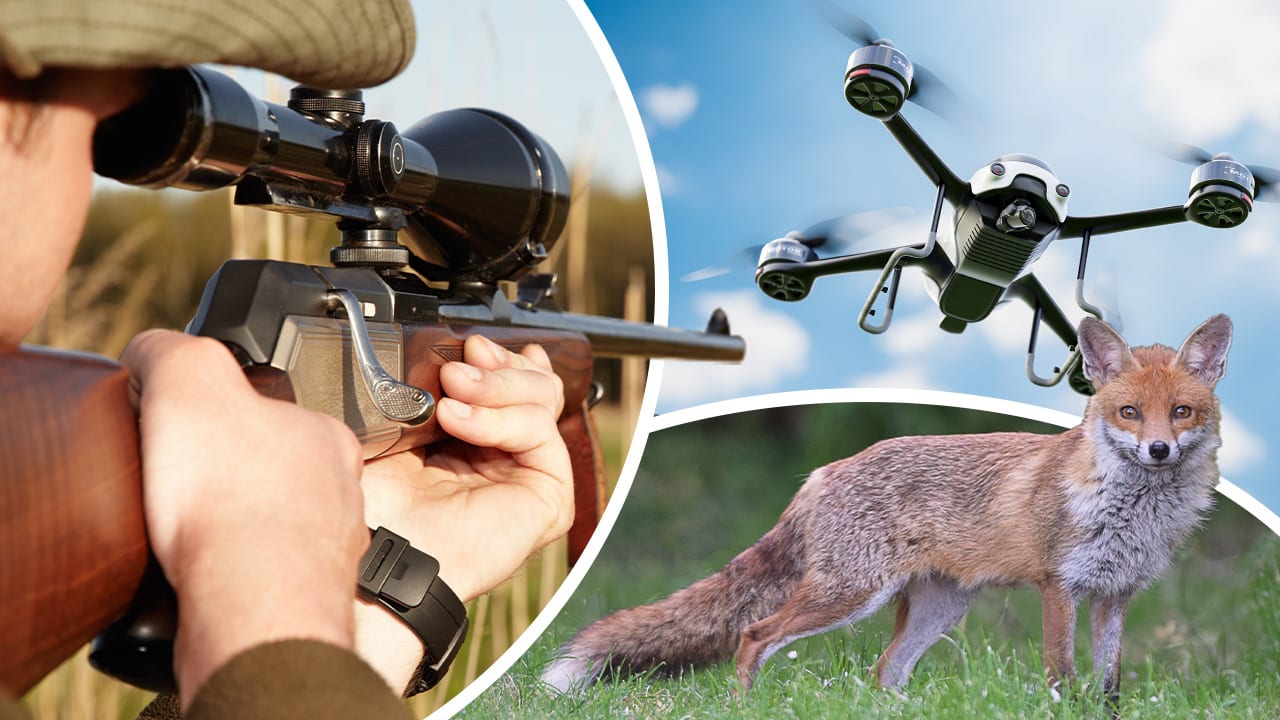NABU Defends Drone Use in Fox Hunts: A Controversial Conservation Tool
The use of drones in wildlife conservation is increasingly common, but their application remains a subject of intense debate. Recently, the Naturschutzbund Deutschland (NABU), Germany's largest nature conservation organization, found itself at the center of this controversy after defending its use of drones to monitor fox hunts. This article explores the NABU's justification, the ethical considerations, and the broader implications of drone technology in wildlife management.
NABU's Justification: Monitoring and Transparency
NABU maintains that drone surveillance of fox hunts is crucial for ensuring adherence to hunting regulations and promoting transparency. They argue that traditional methods of monitoring are insufficient to effectively oversee large-scale hunts, often conducted across vast and inaccessible terrains.
Key Arguments for Drone Usage:
- Improved Monitoring Capabilities: Drones offer a bird's-eye view, allowing for comprehensive observation of hunting activities, including the number of hunters, the methods employed, and the potential for illegal practices.
- Increased Transparency and Accountability: The recorded footage can provide irrefutable evidence of hunting practices, deterring illegal activities and facilitating accountability for violations.
- Enhanced Data Collection: Drone footage can contribute valuable data on fox populations, hunting pressure, and the overall impact of hunting on ecosystems. This information is vital for informed conservation decisions.
- Reduced Risk to Human Observers: Traditional monitoring methods often require observers to be physically present, exposing them to potential danger. Drones eliminate this risk.
Ethical and Privacy Concerns: A Balancing Act
While the benefits of drone surveillance are undeniable, the ethical considerations surrounding their use cannot be ignored. Critics raise concerns about privacy violations, potential for misuse, and the overall impact on the hunting community.
Addressing the Concerns:
- Data Privacy: NABU emphasizes strict adherence to data protection laws and regulations. Footage is used solely for monitoring hunting activities and is not intended for any other purposes.
- Transparency and Public Access: The organization suggests mechanisms for making summarized data publicly available, promoting transparency and engaging the public in the conservation discourse.
- Responsible Use and Training: NABU highlights the importance of responsible drone operation and emphasizes the need for thorough training and adherence to strict protocols for its personnel.
The Broader Implications: Drones in Wildlife Management
The NABU's stance underscores a broader trend towards embracing technological advancements in wildlife management. Drones are proving invaluable in various conservation efforts, including:
- Poaching Prevention: Drones are increasingly used to monitor protected areas, deter poachers, and aid in law enforcement efforts.
- Habitat Monitoring: They provide detailed imagery for assessing habitat quality, identifying threats, and planning conservation interventions.
- Animal Tracking and Research: Drones can be equipped with thermal imaging and other sensors to track animals, study their behavior, and monitor their populations.
Conclusion: Navigating the Technological Frontier in Conservation
The debate surrounding drone usage in fox hunts highlights the complex challenges of integrating new technologies into wildlife management. While ethical concerns need to be addressed and carefully managed, the potential benefits of drones for monitoring and conservation are significant. The NABU's defense of its drone program serves as a case study for how conservation organizations can navigate these complex issues, striking a balance between technological advancement and ethical responsibility. Further dialogue and transparent practices are crucial to ensure responsible and effective deployment of drone technology for wildlife conservation globally. What are your thoughts on this emerging technology and its use in conservation efforts? Share your comments below.
